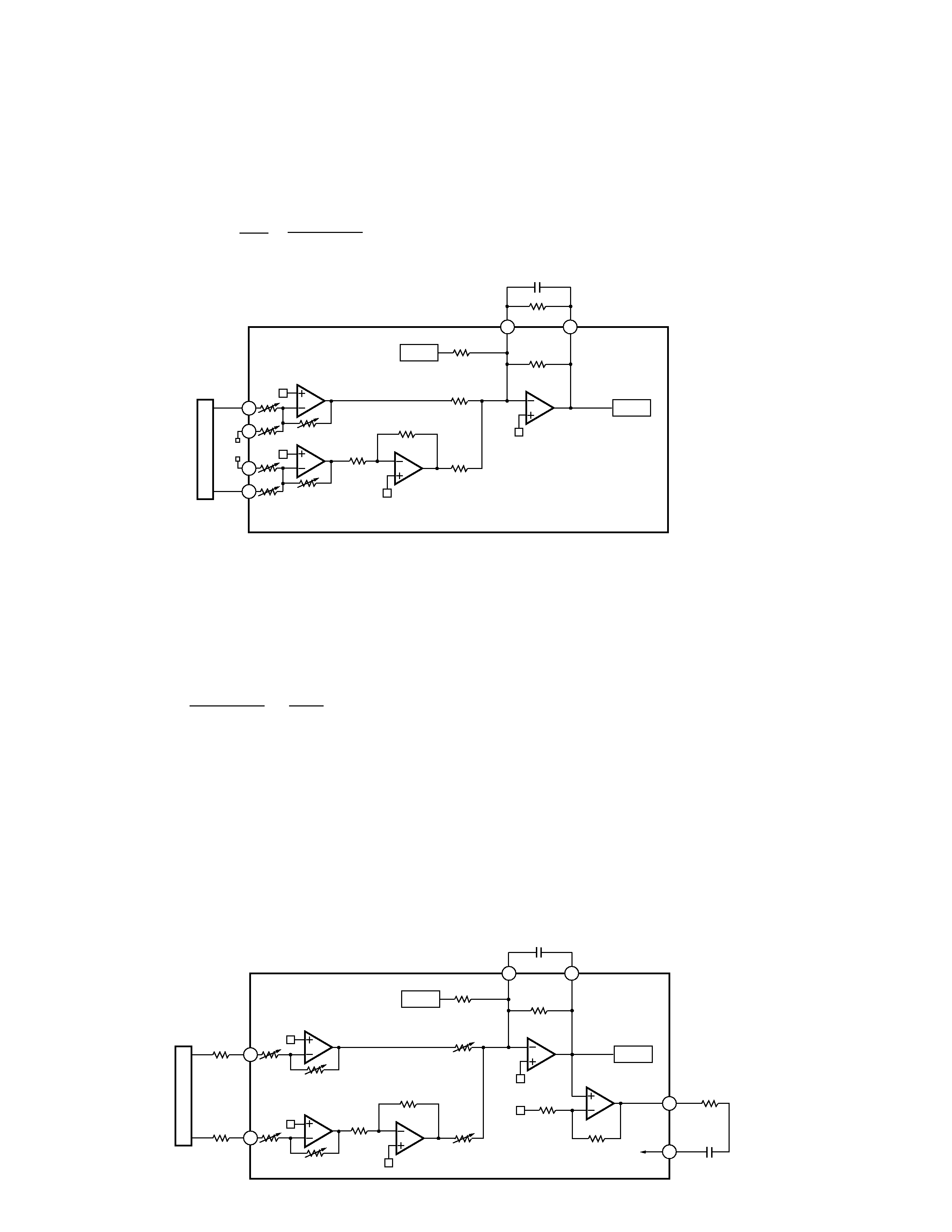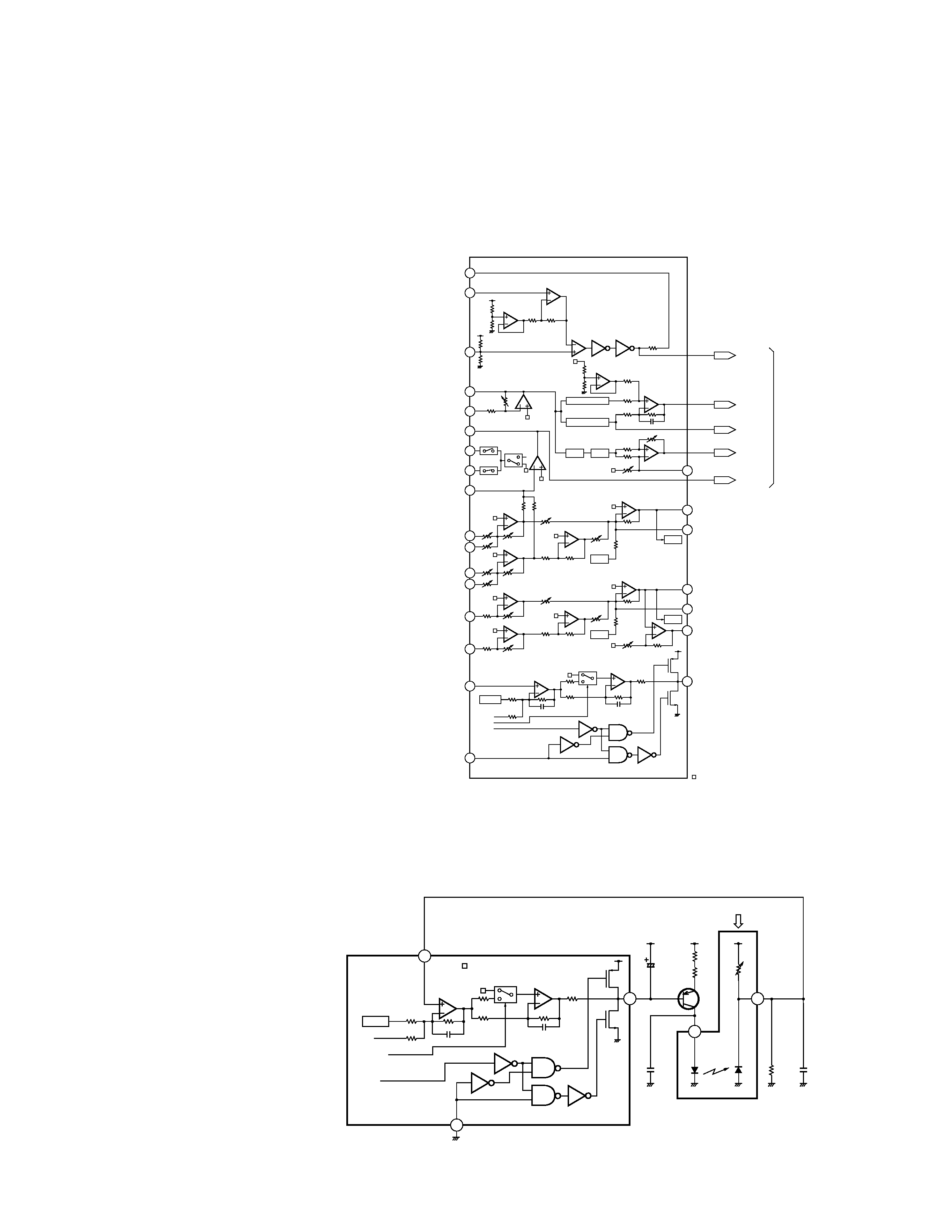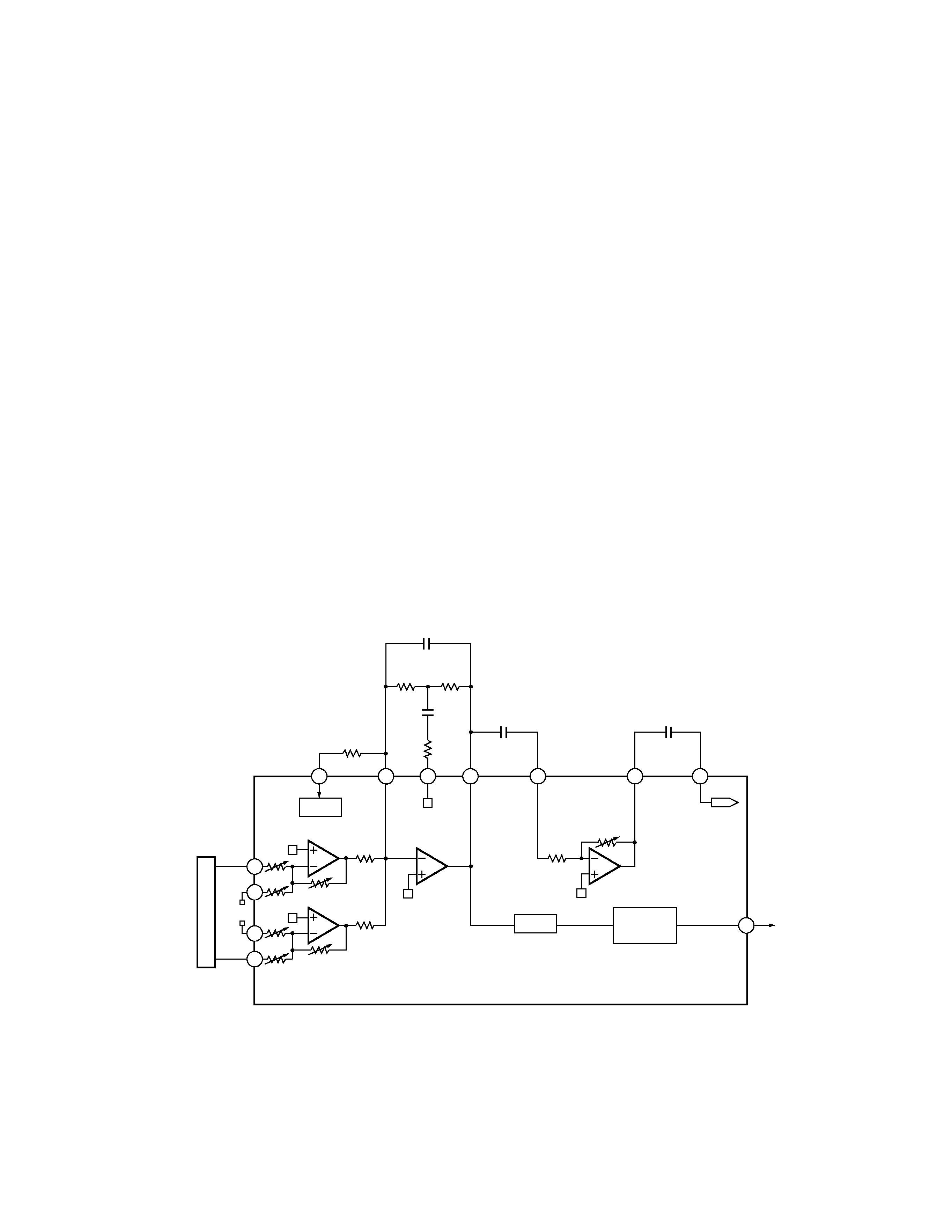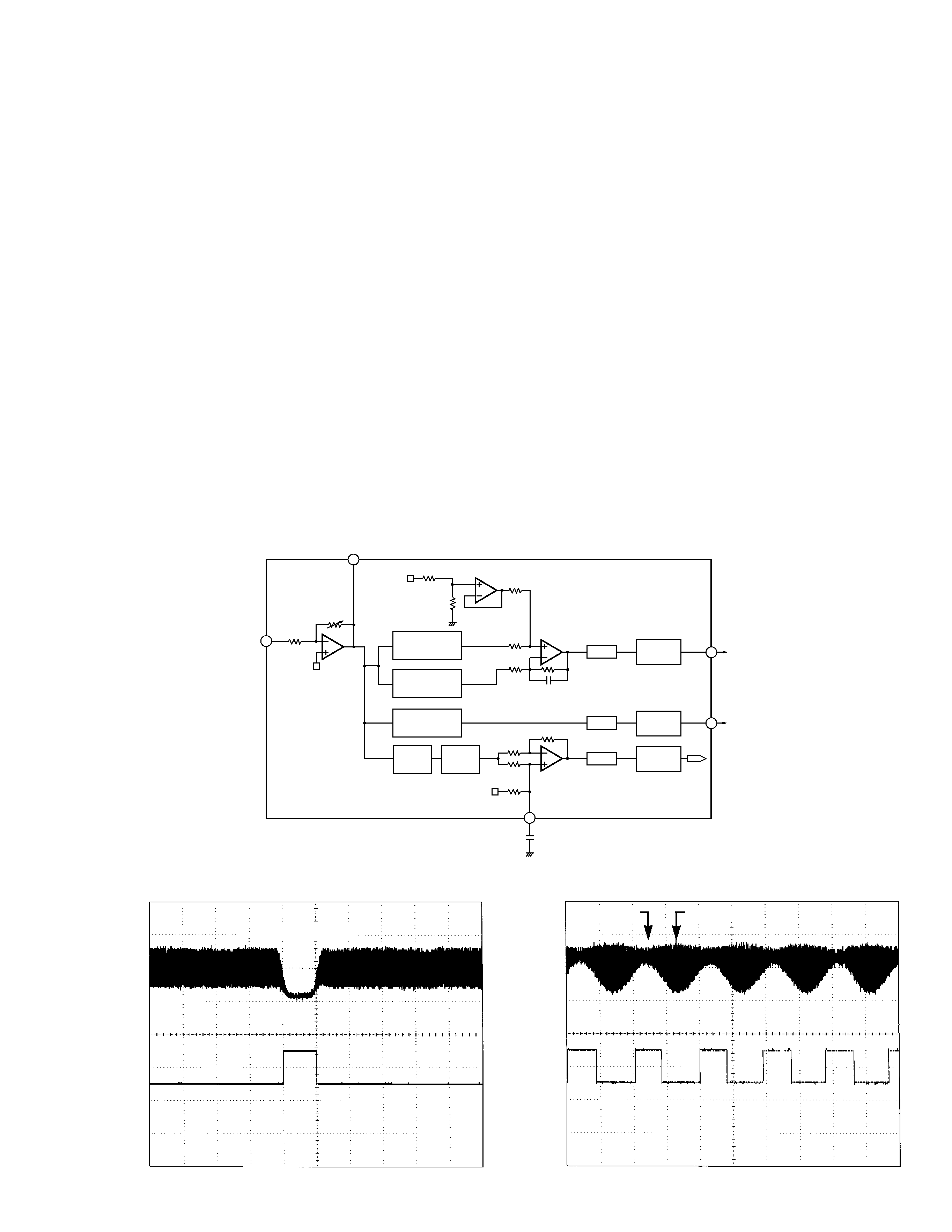
5) Tracking Error Amplifier
The photo-detector outputs E and F are passed through
a differential amplifier and an error amplifier, and then
(E
- F) is output from Pin 93 as the TE signal. The TE
voltage low frequency component is :
TE
= (E - F) ××
= (E - F) × 5.7 (Effective LSI output is 5.0).
Using REFO as the reference, the TE waveform of
approximately 1.3 Vpp is obtained for the TE output.
The final-stage amplifier cutoff frequency is 20 kHz.
6) Tracking Zero Crossing Amplifier
TEC signal (the tracking zero crossing signal) is
obtained by multiplying the TE signal four times. It is
used for locating the zero crossing points of the
tracking error. The zero cross point detection is done for
the following two reasons :
1 To count tracks for carriage moves and track jumps.
2 To detect the direction in which the lens is moving
when the tracking is closed (it is used on the
tracking brake circuit to be described later).
The TEC signal frequency range is 300 Hz to 20 kHz.
TEC voltage
= TE level × 4
Theoretical TEC level is 5.2V. The signal exceeds D-
range of the operational amplifier and thus is clipped.
It, however, can be ignored since this signal is used by
the servo LSI only at the zero crossing point.
4
CX-938
Fig.5 TRACKING ERROR AMPLIFIER AND TRACKING ZERO CROSSING AMPLIFIER
4) Focus Error Amplifier
The photo-detector outputs (A
+ C) and (B + D) are passed
through a differential amplifier and an error amplifier, and
then (A
+ C - B - D) is output from Pin 91 as the FE signal.
The FE voltage low frequency component is :
FE
= (A + C - B - D) ××
= (A + C - B - D) × 5
Using REFO as the reference, an S-curve of approximately 1.5
Vpp is obtained for the FE output. The final-stage amplifier
cutoff frequency is 11.4 kHz.
20k
CN101
84
18
25
83
82
10k
20k
85
A+C
16k
B+D
48k
16k
10k
91
90
D/A
80k
110k
FE
C210 220pF
R208 300k
A/D
FE OFFSET
TO DIG. EQ
48k
38k
CN101
21
23
86
56k
38k
87
F
E
F
224k
E
48k
224k
56k
93
92
D/A
80k
110k
TE
C211 100pF
A/D
TE OFFSET
TO DIG. EQ
48k
R216
27k
R215
27k
60k
20k
95
94
TE2
TEC
R212
0
C212
6800pF
16k
10k
(80k//300k)
20k
Fig.4 : FOCUS ERROR AMPLIFIER
224k
(56k
+27k)
80k
38k












